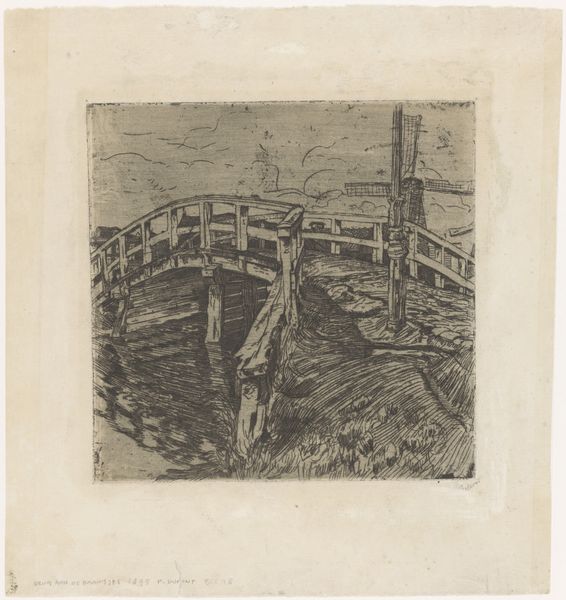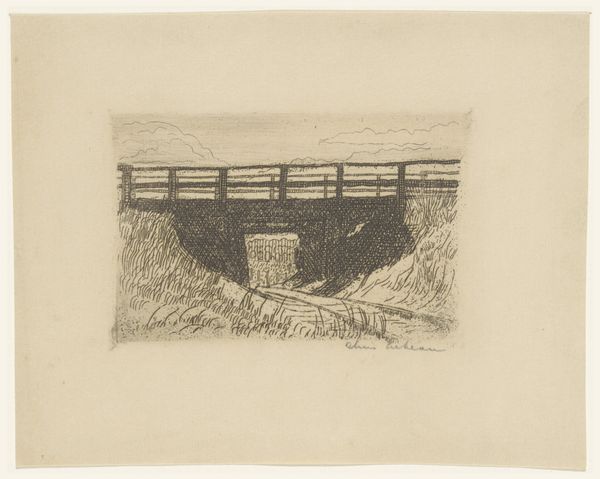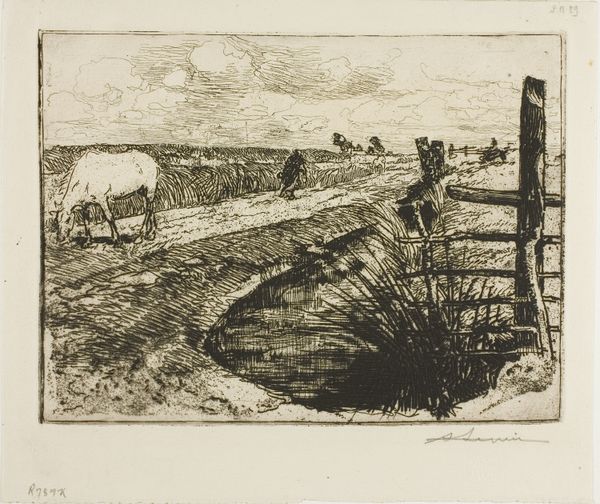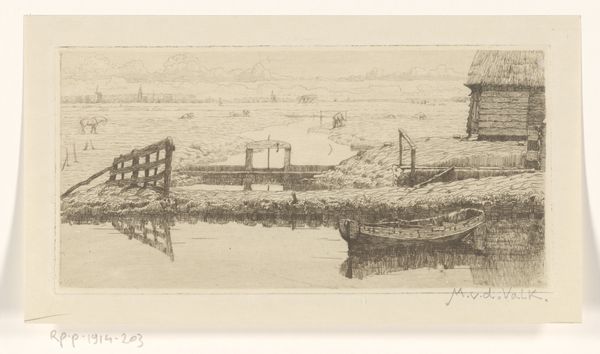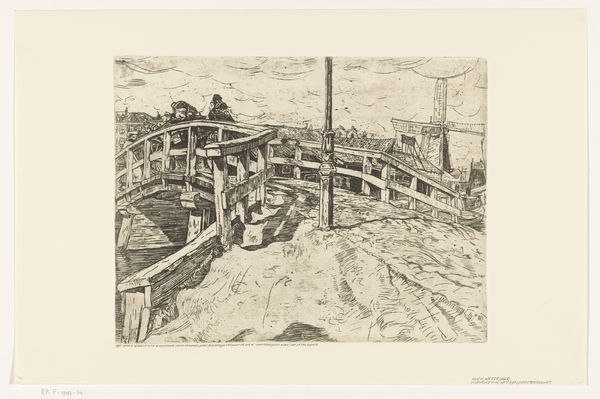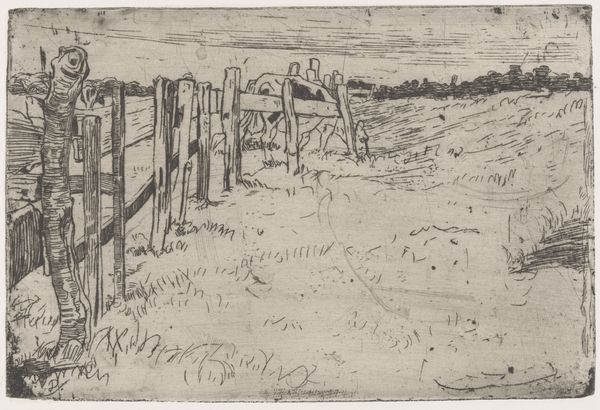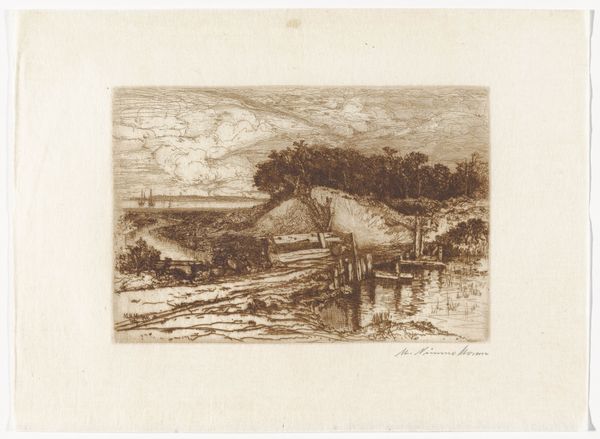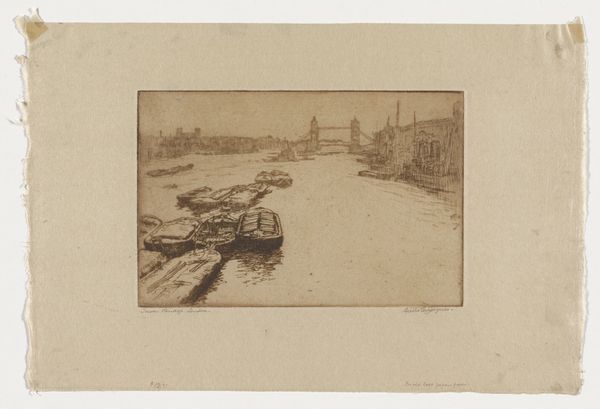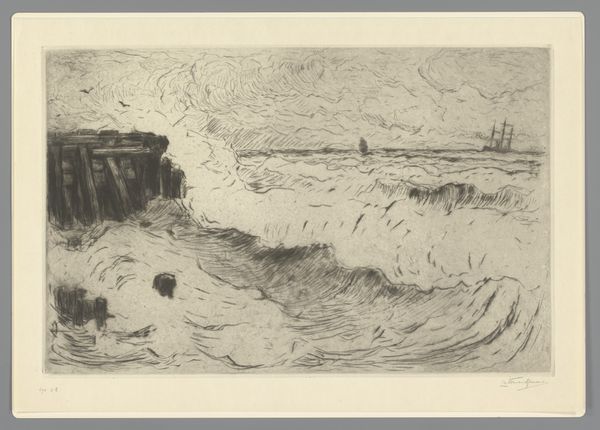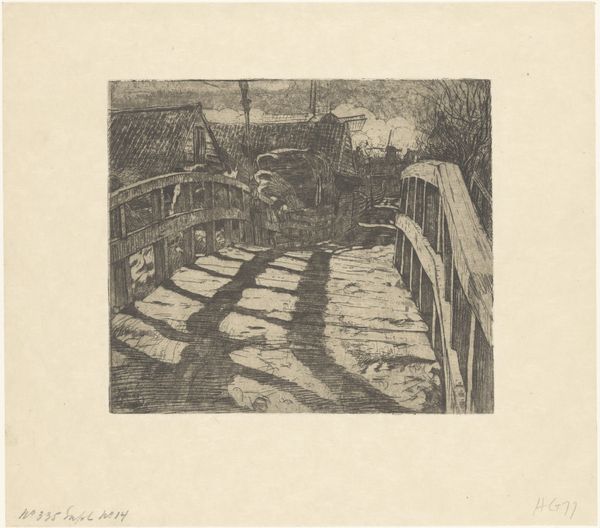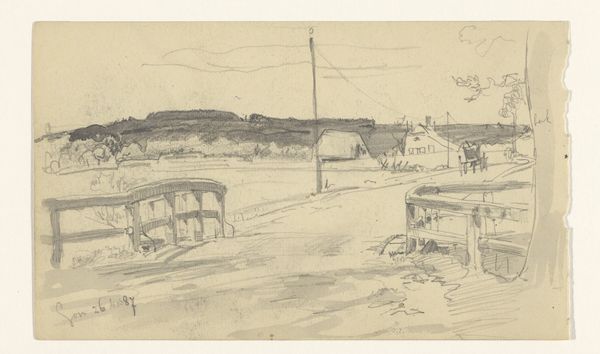
print, etching
# print
#
etching
#
landscape
#
genre-painting
#
realism
Dimensions: height 156 mm, width 283 mm
Copyright: Rijks Museum: Open Domain
Editor: This is "Landweg met brug," or "Country Road with Bridge," an etching made in 1895 by Pieter Dupont. It’s incredibly detailed for a print, almost photographic, and yet…melancholy. What historical narratives do you see embedded in this unassuming landscape? Curator: This etching presents a compelling glimpse into the Dutch countryside during the late 19th century. Genre paintings of rural scenes gained popularity for their perceived authenticity. I'd say the socio-political and cultural implications of what looks like an ordinary image are interesting. Editor: In what sense? The woman seems like someone simply walking down the road, and there’s just a horse-drawn cart and bridge in the background. Curator: Exactly! The 'everydayness' is calculated. The woman and her place reflect the societal shift wherein people romanticized a rural life they barely lived, a cultural counter-narrative reacting to rapid industrialization. Consider also how landscape as a genre was being shaped by nationalistic sentiments, subtly reinforcing notions of cultural identity through the idealized depiction of 'homeland'. How might Dupont, as an artist at the time, have contributed to these visual discourses? Editor: So, Dupont is contributing to this sort of cultural imagery, consciously or unconsciously? The very act of depicting this scene elevates it somehow? Curator: Precisely. Dupont isn't simply capturing a scene; he's engaging with prevailing notions about nature, labor, and national identity. This print is made accessible and the viewers, who often live in cities, participate in an imagined authenticity. The scale and medium also allowed for wide distribution and helped normalize this romantic perspective. Editor: That definitely shifts my understanding. What I thought was a simple, honest depiction is actually more of a carefully constructed ideal. Curator: Indeed. Recognizing how social and cultural forces shape artistic creation enables us to perceive layers beyond the immediately visible, transforming our understanding of artworks.
Comments
No comments
Be the first to comment and join the conversation on the ultimate creative platform.
